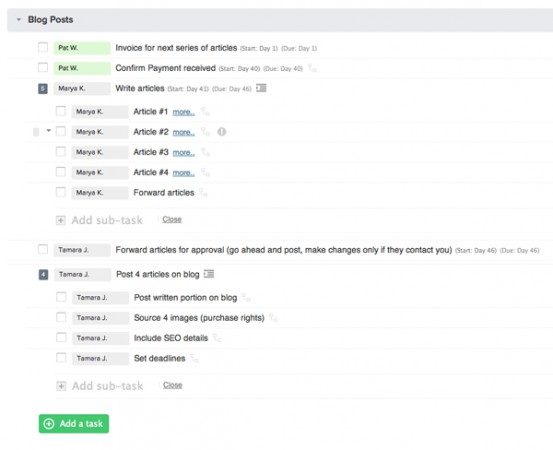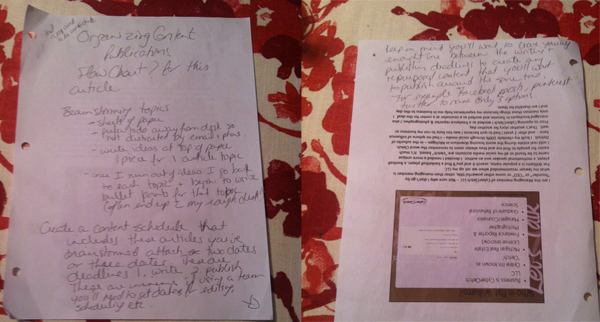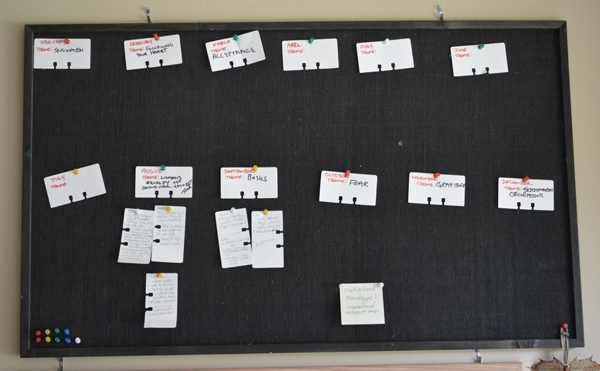In past posts we’ve covered:
- 7 Reasons Why Content Creation is Important
- How to be Successful at Posting to Your Blog Consistently
- The Kind of Content We Should Share and
- How to Repurpose Content From Your Blog
In this article, I’m sharing my personal techniques for organizing content publications. When I strategize content for my clients, it’s MUCH easier than writing for myself. I use an online project management platform and each article has a task list that basically looks like this (it varies by client):

It took me a long time to determine what worked for me personally, so be patient with yourself if you are doing your own writing. It may take a few attempts to find your best procedure.
In order to get my creative juices flowing, I begin on paper. For the content series, I laid out multiple 8.5 x 11 sheets of scrap paper on the dining room table. I then placed an article idea on the top of each piece of paper. I find that when writing a series, there are many cross over ideas and it gets too confusing if I try to track it in my head or to complete each article one at a time. This technique allows me to write a bullet list of all the points I want to make under each particular topic. They practically write themselves with this method!
The following is the piece of paper I used for this article. As you can see from the back, I really do recycle my scrap paper – it’s an unused bio slide for a presentation I created on social media for real estate agents (Just in case you were trying to read it upside down!).

When I brainstorm on these sheets of paper, I prefer to do so in a location separate from my office. No distractions!
You can also use the same technique with digital files or even go retro and use a bulletin board and rolodex inserts (what else are you going to use them for now?).
After I’ve distributed all my ideas on each topic, I have a rough draft of several articles. I then pull each of them together into paragraphs for an article and send it off to my team editor.
Could I post it without the editing step?
Probably. But I’ve learned that I only see what I think I wrote. If I’ve missed a letter or made a typo, my editor is more likely to notice it than I am.
Be sure to set up a publishing schedule. Using a task list such as the one I shared below, assign deadlines for each stage of the process.
- Writing deadlines
- Article 1
- Article 2
- Article 3
- Article 4
- Editing deadlines
- Article 1
- Article 2
- Article 3
- Article 4
- Publishing deadlines
- Article 1
- Article 2
- Article 3
- Article 4
- Social media sharing (for each individual post and each platform)
- Article 1 deadlines
- Article 2 deadlines
- Article 3 deadlines etc….
- Article 1 deadlines
Keep in mind you’ll want to allow for enough time between the writing and publishing deadlines to create any repurposed content. For example, you may want to create an image about your topic that can be shared on Pinterest as well.
Find the process that works best for you. The most important piece is to DO it. Set aside the time and get it done!
CyberCletch LOVES to project manage content…we’ll help you at any point in the process. We can write a piece based on your bullet points or topic; or we can create an annual publishing schedule, do the research and follow through to publication and social media sharing. We’re here to make your life easier!
SHARE:

